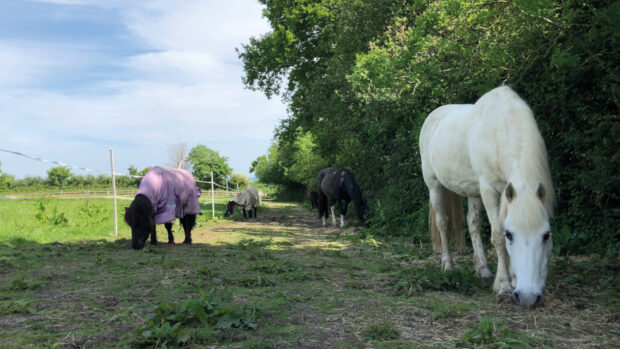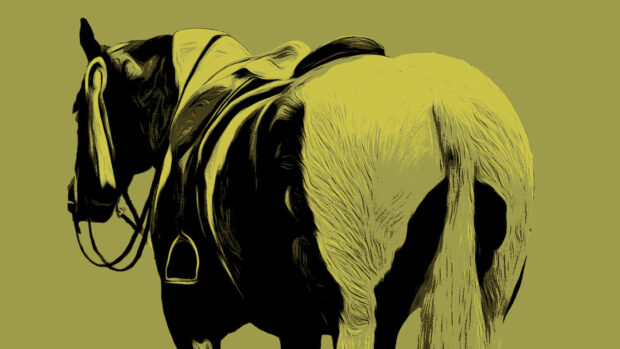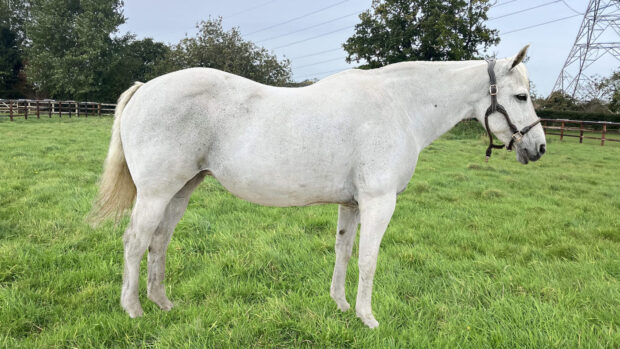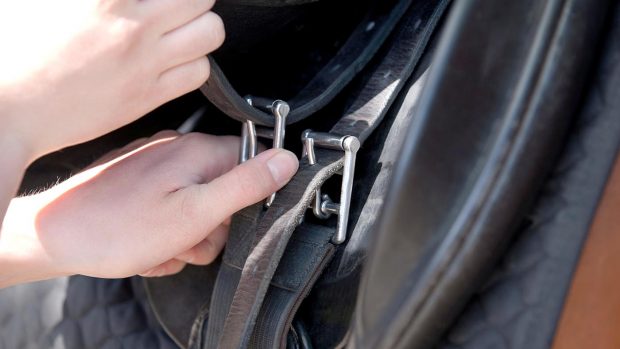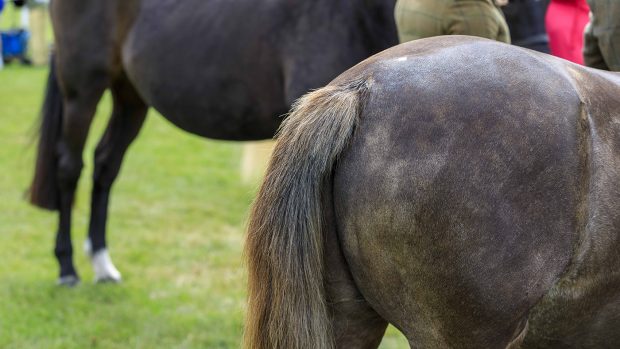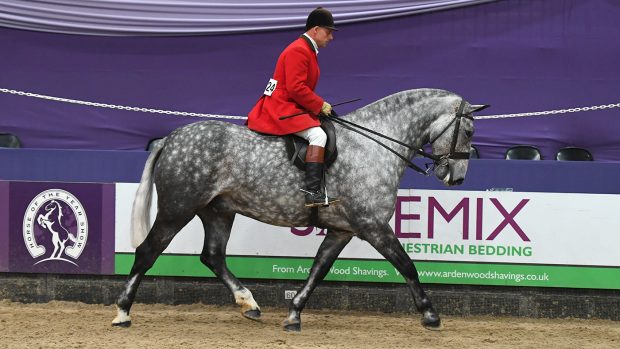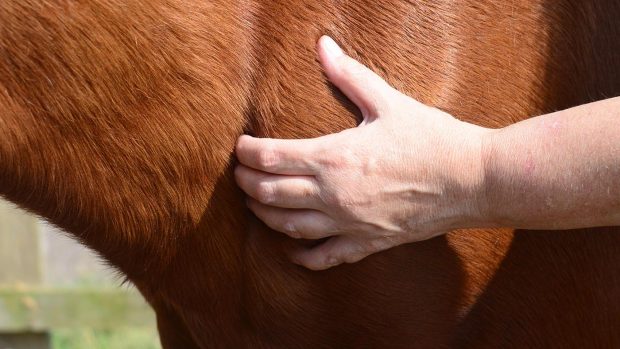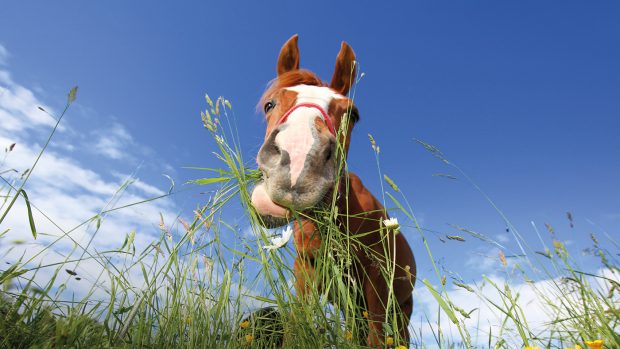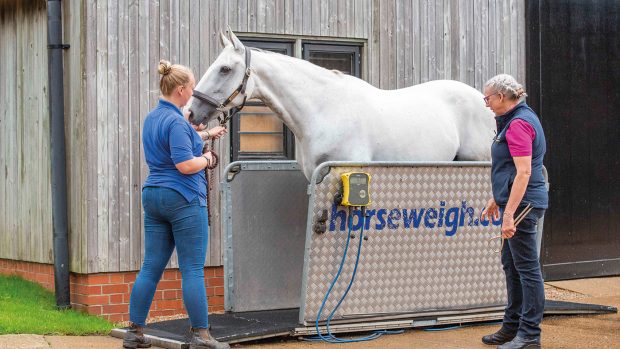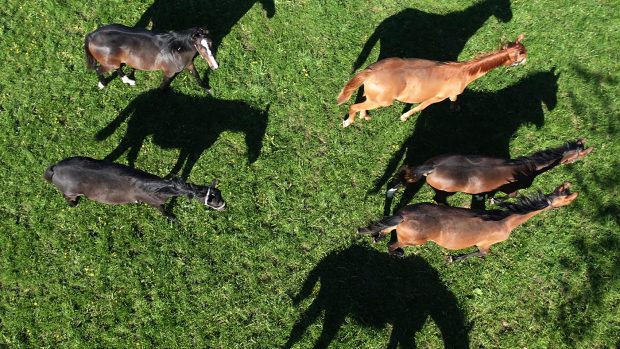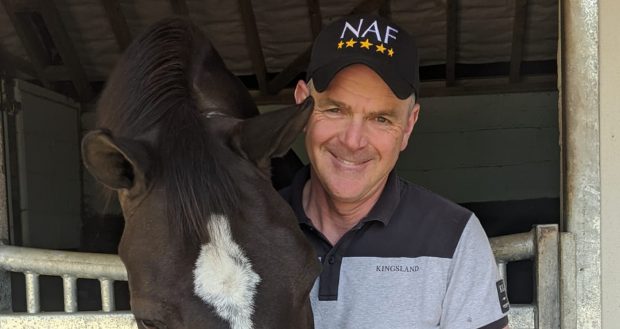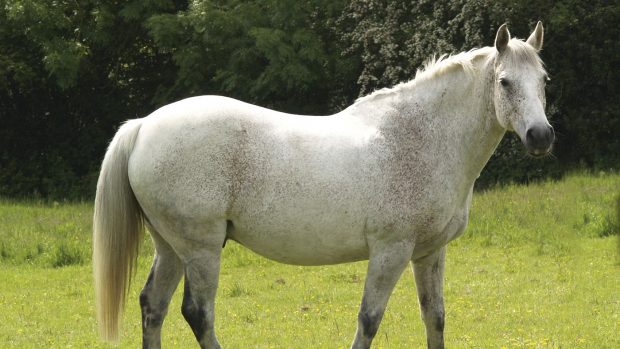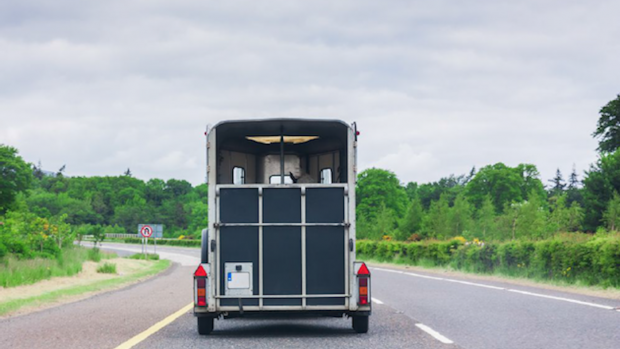Overweight horses
 Go straight to expert advice on managing your horse’s weight, plus news on the latest research into overweight horses
Go straight to expert advice on managing your horse’s weight, plus news on the latest research into overweight horses
Like humans, horses come in all sorts of different shapes and sizes, and some of them — ‘good doers’ as they’re known — are prone to putting on weight. Obesity in the horse world is as common a problem as it is in the human one. Weight gain occurs when a horse’s nutritional intake exceeds his physical output. In other words, if your horse is eating more than he’s burning off, he’ll get fat.
Leisure horses are at higher risk of becoming overweight, and ponies in particularly have evolved to survive on a limited fibre diet while grazing rough plains. However, all horses, whether ridden or not, stabled or living out, will need to have their diet, health and exercise managed in accordance with their type and workload to ensure they maintain a healthy weight.
If your horse is overweight, look at feeding him one and a half per cent of his normal healthy body weight, as opposed to the two to two and a half per cent you’d feed the average horse. Remember that grazing counts as part of the ‘feed’ ration and consider a grazing muzzle to limit the amount of grass being eaten. Weight loss should be gradual and carefully managed to prevent further problems arising. No horse should be deprived of roughage for long periods as this can lead to colic and other serious problems.
If you allow your horse to become or remain overweight, he may become prone to laminitis, a painful and potentially crippling disease. Heat in the feet, with the horse being footy, unwilling to move and/or leaning back on his heels are typical signs of laminitis; if you see them, seek immediate veterinary attention.
It’s a good idea to check your horse’s weight regularly using a weigh tape, and keep a record of this. Use ‘body scoring’ to monitor your horse’s body condition; he should be rounded from behind, but without a gullet across the pelvis, and the ribs should be easily felt by not seen. This video explains how. If you cannot feel your horse’s ribs, your horse is too fat and needs to start a weight management programme.
